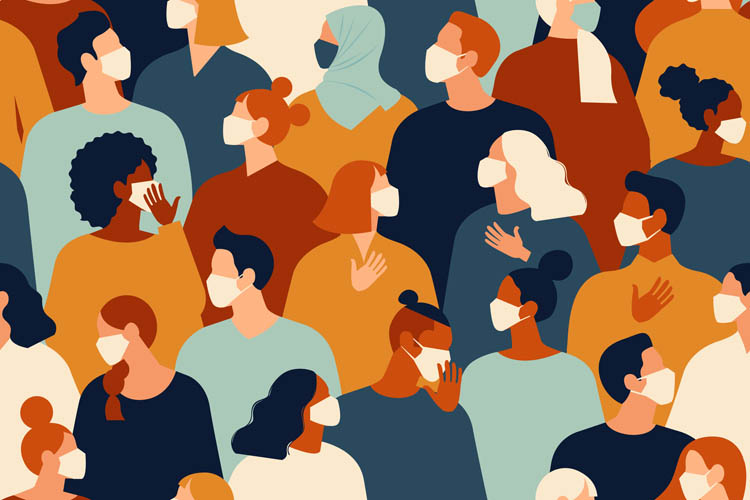In the first year after the COVID-19 Pandemic, global rates of anxiety and depression have increased by 25% according to the World Health Organization (WHO). Many therapists at SOMA Wichita have reported increased rates of anxiety in their clients as a direct result of social isolation and the systemic trauma of the pandemic. Social anxiety was another common struggle for many post-pandemic, especially youth and young adults. It’s natural for humans to have increased rates of anxiety after social isolation. Now that things are shifting, how can we manage and alleviate the resulting anxiety and social anxiety? Here are are four ways you and your loved ones can tangibly work on managing post-pandemic anxiety.
1. Slowly start exposing yourself to social situations. Write a list of social events you used to attend or activities you enjoyed pre-pandemic. Rate these events from 1-10 with 1 being “No anxiety whatsoever” and 10 being, “This gives me heart palpitations just thinking about it”. Start with activities in the lowest levels first and take it activity-by-activity. Make sure to brainstorm ways to leave these activities if needed or phrases you might say to help ease the discomfort of anxiety. Things like, “I’m okay with hanging out with you, but I’m not ready for hugs yet. Can we hang out without hugs until I’m ready?” or “I’m working on socializing again, so I may be more quiet than normal. Don’t mind me!”
2. Practice grounding or mindfulness techniques. Usually when we are anxious, are nervous system is activated. Even if we logically know “hey, I’m being irrational” our bodies can sometimes work against us. Luckily, grounding and mindfulness can help our bodies get back into a calm and grounded physical space. Apps like Calm or free guided practices on YouTube can be very helpful when we start to feel anxiety coming on and as a daily practice. I’d recommend you find a practice that clicks for you (as I know some felt woo-woo and hokey to me) and practice those regularly. It’s A LOT harder for us to engage in these practices when we are feeling anxiety if we don’t practice them when we are neutral.
3. Don’t be afraid to be awkward. Going without a mask and saying hi to people is going to feel weird at first. It’s important to embrace the awkward and know that you aren’t alone. Even social people have reported struggling with socializing post-pandemic. The more you can accept and embrace these feelings (and give your body grace because we did go through elongated social isolation/pandemic after all) the more we can move past them and free up space in our brains for other emotions and thoughts.
4. Work with a therapist. I know, I know. As a therapist, I’m biased. If you find that the above techniques are not working and you’re still struggling, that’s okay too. Many people have sought therapy for increased mental health concerns post-pandemic. If it’s accessible, try to work with a therapist who is well-versed in treating anxiety. Talking things out, healing narratives, and doing exposure and grounding protocols with a trained professional can work wonders.

